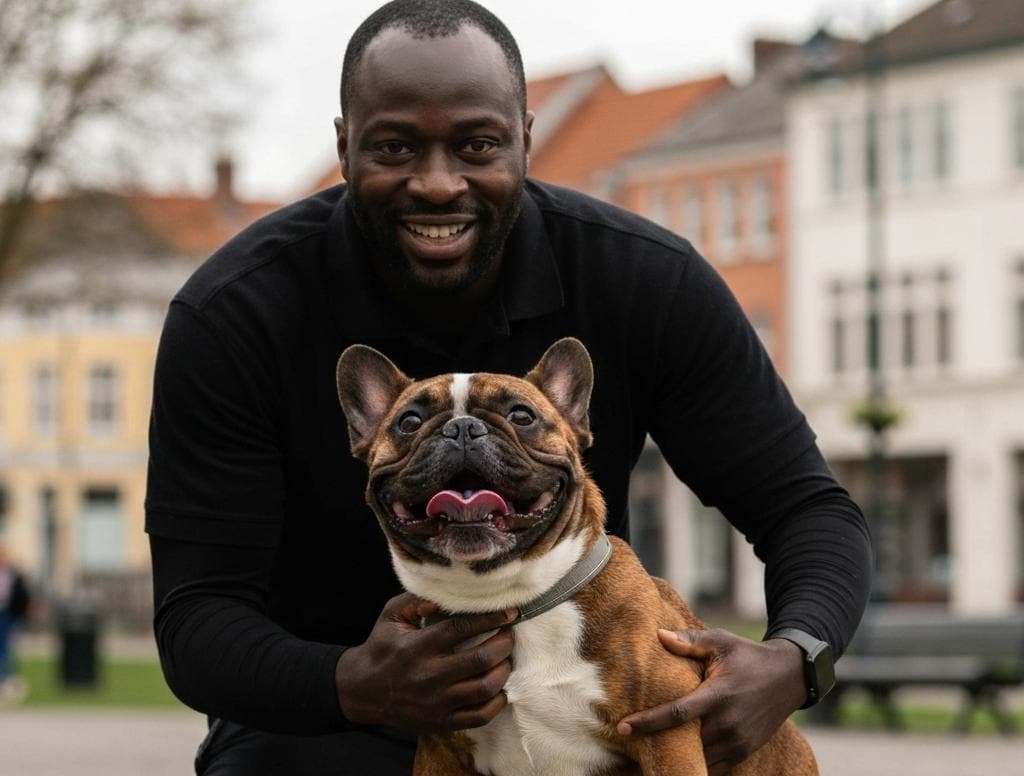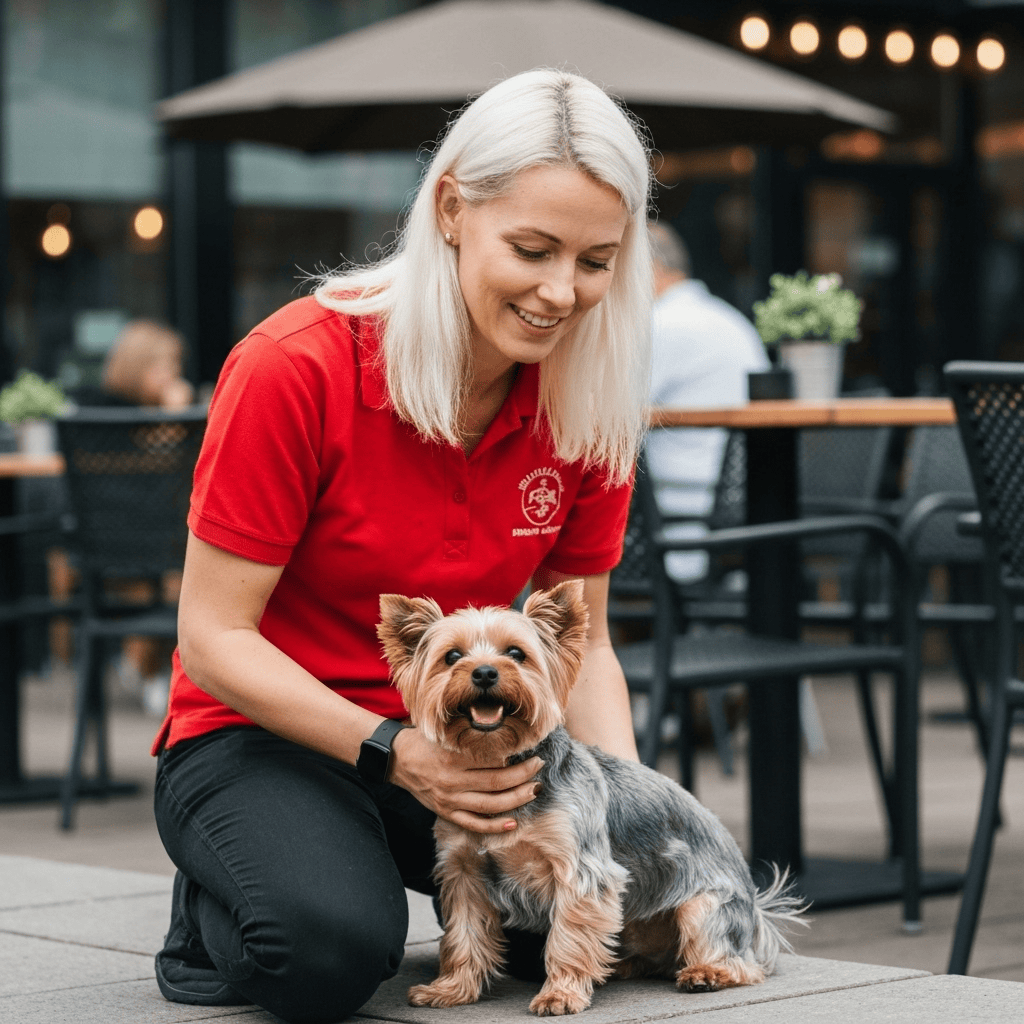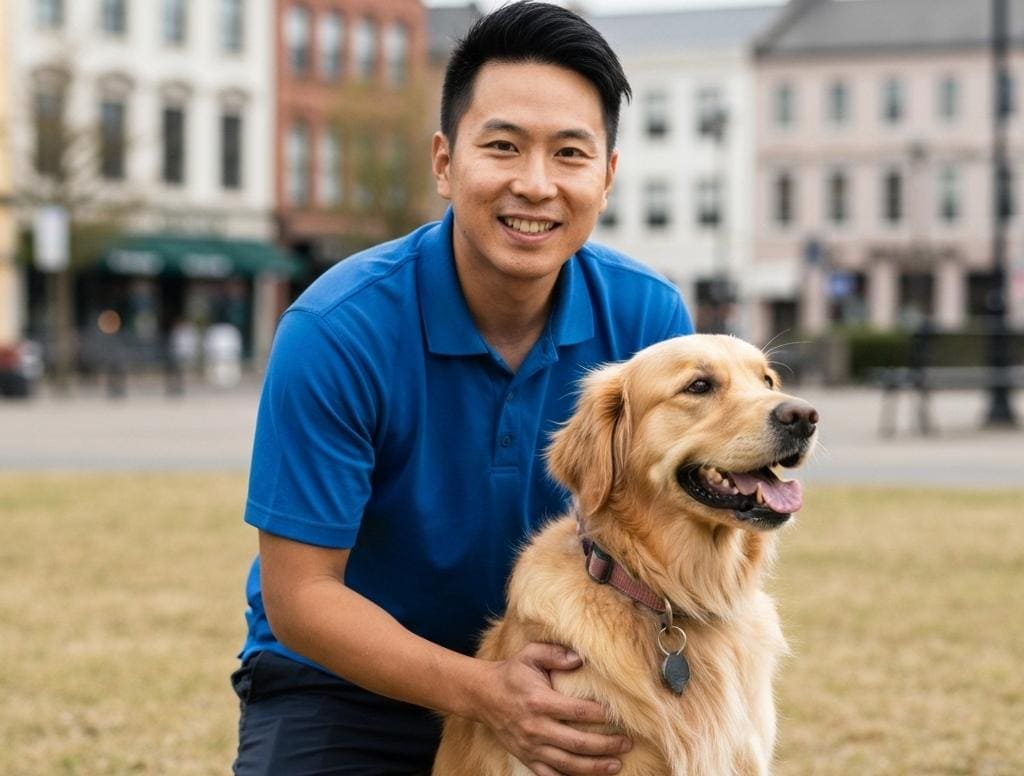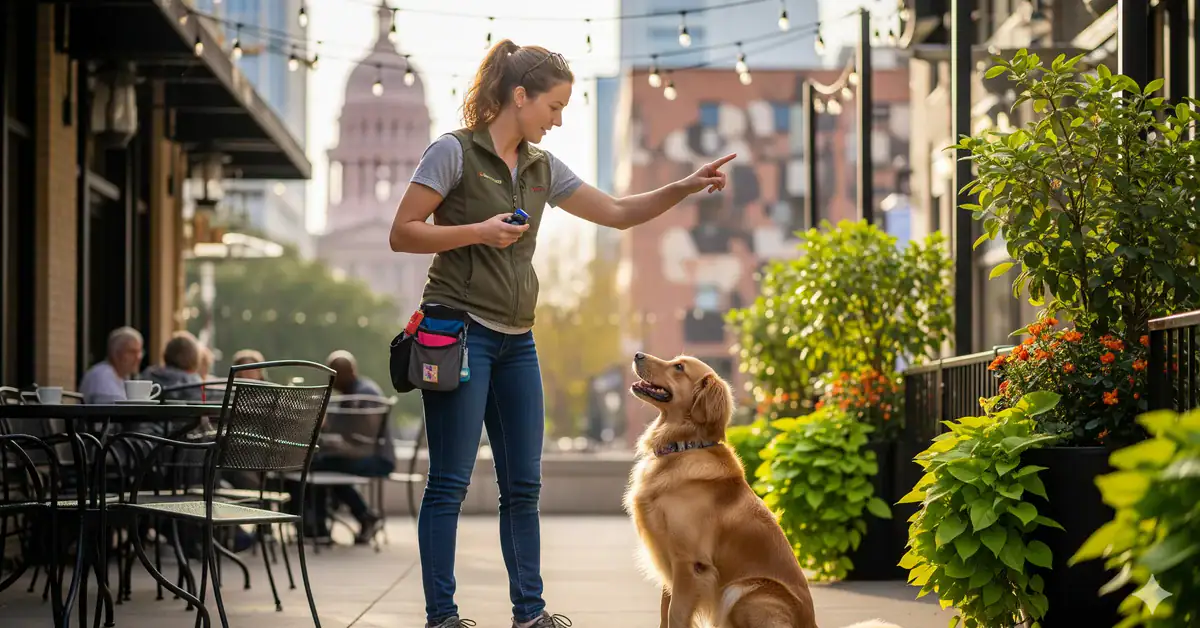Your Complete Guide to Choosing a Dog Trainer in Austin
Living with a dog in Austin means navigating busy sidewalks along South Congress, crowded patios at the Domain, and the constant buzz of scooters on the Ann and Roy Butler Trail. Your dog needs to handle all of this while staying calm and well-behaved.
The right training helps your dog succeed in Austin’s unique environment. Whether you’re dealing with apartment living in East Austin or weekend crowds in Zilker Park, good training makes life easier for both you and your dog.
Most pet rules in Austin come from the City of Austin since we’re in Travis County. The neighborhoods that present the biggest training challenges include South Austin, East Austin, Downtown, Mueller, and North Burnet, so keep these areas in mind when you’re looking for real-world practice opportunities.
How to Choose the Right Trainer
Start by looking for someone who uses positive reinforcement methods and can clearly explain why they avoid fear-based techniques. Austin dogs face unique challenges like crowded trails, outdoor dining distractions, and apartment living, so your trainer should understand how to prepare your dog for these real situations.
Education matters more than you might think. The best trainers often hold respected dog trainer certifications like KPA-CTP, CPDT-KA, IAABC-CDBC, or CTC.
Ask about specific services that fit your lifestyle. Do they offer in-home training for apartment-specific issues? Can they help with patio manners or reactivity around bikes and other dogs? And always confirm they carry liability insurance, especially since you’ll likely meet in parks or public spaces.
Common Dog Training Methods Explained

Most Austin families see the best results with reward-based training that focuses on real-life situations your dog will actually face.
Basic obedience for city life covers the essentials: reliable sit, down, stay, polite leash walking, recall, and calm greetings that work whether you’re at a coffee shop patio or crossing busy intersections.
Puppy training and socialization helps young dogs get comfortable with Austin’s sights and sounds early. This includes house training, crate comfort, bite inhibition, and positive exposure to everything from food trucks to construction noise.
Behavior modification uses structured plans like desensitization and counterconditioning to help dogs with reactivity, fear, separation anxiety, or noise sensitivity. These issues are common in busy urban environments.
Group classes versus private lessons each have their place. Group classes help your dog learn to focus around other dogs, while private sessions let you work on home-specific problems and neighborhood triggers.
Day training and board-and-train programs can speed up the learning process, but ask detailed questions about the trainer’s methods, your dog’s daily care, and how they’ll help you maintain the training at home.
Stay away from any program that uses fear, pain, or intimidation. These methods might seem faster, but they damage your relationship with your dog and often create bigger problems down the road.
Average Cost of Dog Training in Austin (Updated for 2025)
Training costs vary based on the trainer’s education, session length, travel requirements, and how complex your dog’s issues are. Here’s what most Austin dog owners can expect to pay.
| Service Type | Typical Price | Notes |
|---|---|---|
| Group classes (4–6 weeks) | $180–$320 total | Puppy classes and basic obedience |
| Private lessons (60–90 min) | $110–$200 per session | In-home or at a park |
| Puppy packages (4–6 visits) | $380–$720 total | Potty training, socialization, manners |
| Day training (trainer works dog + owner coaching) | $500–$1,000 per week | 3–5 sessions weekly |
| Board and train (2–4 weeks) | $2,200–$4,800 total | Ask about methods and daily enrichment |
| Behavior consult (fear/reactivity) | $150–$300 initial | Follow-ups at private lesson rates |
Many trainers offer package deals that bring down the per-session cost. Complex behavior cases and trainers with advanced certifications typically charge at the higher end of these ranges.
Questions to Ask a Potential Dog Trainer
Before you commit to any trainer, get clear answers to these important questions:
- What training methods do you use, and how do you keep training fear-free?
- What education or credentials do you hold, such as KPA-CTP or CPDT-KA?
- How will you customize a training program for my home, neighborhood, and goals?
- Do you offer in-home sessions, group classes, or day training, and which fits my dog?
- How do you measure progress and decide when to add distractions?
- What is included in the price, and are there travel or cancellation fees?
- Do you carry liability insurance and provide a written agreement?
- For behavior cases, do you coordinate with veterinarians if needed?
- What should I practice between training sessions to help my dog keep improving?
Local Laws and Practical Considerations in Austin and Travis County
Austin requires dogs to stay on leash in public unless you’re inside a designated off-leash area. The city maintains an official list of these spots and their specific rules on its Off-Leash Areas page.
Animal protection officers actively enforce leash laws, cruelty prevention, and nuisance rules, including complaints about excessive barking. You can find more details about enforcement on the City’s Animal Protection page.
Texas law requires all dogs to have current rabies vaccination. The Texas Department of State Health Services provides statewide guidance at Rabies in Texas. Keep your dog’s rabies tag or certificate handy since training facilities and boarding places will ask for it.
Neither the State of Texas nor Travis County requires professional dog trainers to have special licenses. Good trainers follow standard business practices and carry liability insurance. If your trainer runs group activities on city property, they should have the proper Parks permits.
Local Austin Resources for Dog Owners
Austin offers plenty of great spots for training practice and exercise. Red Bud Isle on Lady Bird Lake gives you off-leash space near water for recall training. Norwood Estate Dog Park near Riverside and I-35 has separate areas for small and large dogs, while West Austin Park’s off-leash area offers a smaller, fenced option close to Downtown.
For leashed training, the Ann and Roy Butler Hike-and-Bike Trail provides excellent practice around joggers and cyclists. The Barton Creek Greenbelt offers trail training opportunities, though you’ll want to check current access information at Barton Creek Greenbelt.
If you need help with lost pets or other animal services, the Austin Animal Center provides city support and resources.

Common Questions
How much does in-home dog training cost?
Most Austin trainers charge $110 to $200 for a 60 to 90-minute in-home session. Package deals usually lower the per-lesson cost, and complex behavior cases might cost more.
Is in-home dog training worth it?
Absolutely, especially for issues that happen at home like door greeting problems, window barking, or leash training that starts right from your front door. It’s also great for puppies learning house routines like potty training and crate comfort.
Can you pay someone to house train your dog?
Yes, many trainers offer puppy programs or day training focused specifically on potty training. They’ll create a clear schedule and prevention plan, but you’ll need to stick to their guidelines between visits for it to work.
What is the 3-3-3 rule for dog training?
This guideline helps new dogs adjust: 3 days to decompress from change, 3 weeks to learn your routine, and 3 months to feel truly settled. Good training programs respect this timeline with short, positive sessions.
How long will it take to reach my training goals?
Most families notice improvement within 2 to 4 sessions if they practice consistently. Basic manners usually take 4 to 8 weeks to solidify, while issues like reactivity, fear, or separation anxiety need longer with a structured behavior plan.

What should I bring to group classes?
Pack a flat collar or harness, 6-foot leash, high-value treats, waste bags, water, and vaccination records if requested. Leave retractable leashes at home since they don’t work well in class settings.
What’s the leash law in Austin?
Dogs must stay on leash in public unless you’re in a posted off-leash area. Check the city’s Off-Leash Areas page for current locations and rules.
Do I need a dog license in Austin or Travis County?
Austin doesn’t require traditional dog licenses. Keep your dog’s rabies vaccination current and make sure they have visible ID tags or a microchip so you can be contacted if they get lost. The Austin Animal Center can provide current requirements.
What shots does my dog need in Travis County or Texas?
Texas requires rabies vaccination for all dogs. Your veterinarian might recommend other vaccines like DHPP and Bordetella based on your dog’s lifestyle and risk factors. Check Texas DSHS for state guidelines.

Are dog trainers required to be licensed in Austin or Travis County or Texas?
No special license is required, but many professional trainers earn voluntary credentials like CPDT-KA or IAABC-CDBC to demonstrate their education and commitment to ethical training. Always ask about liability insurance.
Where can I practice off-leash recall?
Use designated areas like Red Bud Isle, Norwood Estate Dog Park, and West Austin Park’s off-leash zone. Start in smaller, fenced sections before moving to larger spaces, and check current rules at the city’s Off-Leash Areas page.
Which dog parks allow training around Austin?
You can do personal training at any posted off-leash area as long as you share space respectfully and don’t block entrances or create safety issues. Professional trainers running commercial classes typically need Parks permits and insurance.
What beaches or trails allow dogs for training?
Austin doesn’t have ocean beaches, but we have great lakefront areas. Leashed dogs are welcome on the Ann and Roy Butler Hike-and-Bike Trail and most Barton Creek Greenbelt access points. Red Bud Isle offers off-leash water access if you follow posted rules.
What insurance should a professional dog trainer carry?
While Texas doesn’t require it, responsible trainers carry general liability insurance. Trainers with employees might add workers’ compensation, and those who transport dogs should have commercial auto coverage. Boarding facilities need additional coverage for overnight care.
Do park staff enforce dog rules?
Yes, both City Animal Protection officers and Parks staff can issue citations for leash violations and other problems. Check the Animal Protection page for enforcement information.

Finding the right trainer who uses positive methods and understands Austin’s unique environment will help you raise a dog who feels comfortable everywhere from South Austin food trucks to East Austin patios. Good training isn’t just about obedience – it’s about building a strong relationship that makes city life enjoyable for both of you.
